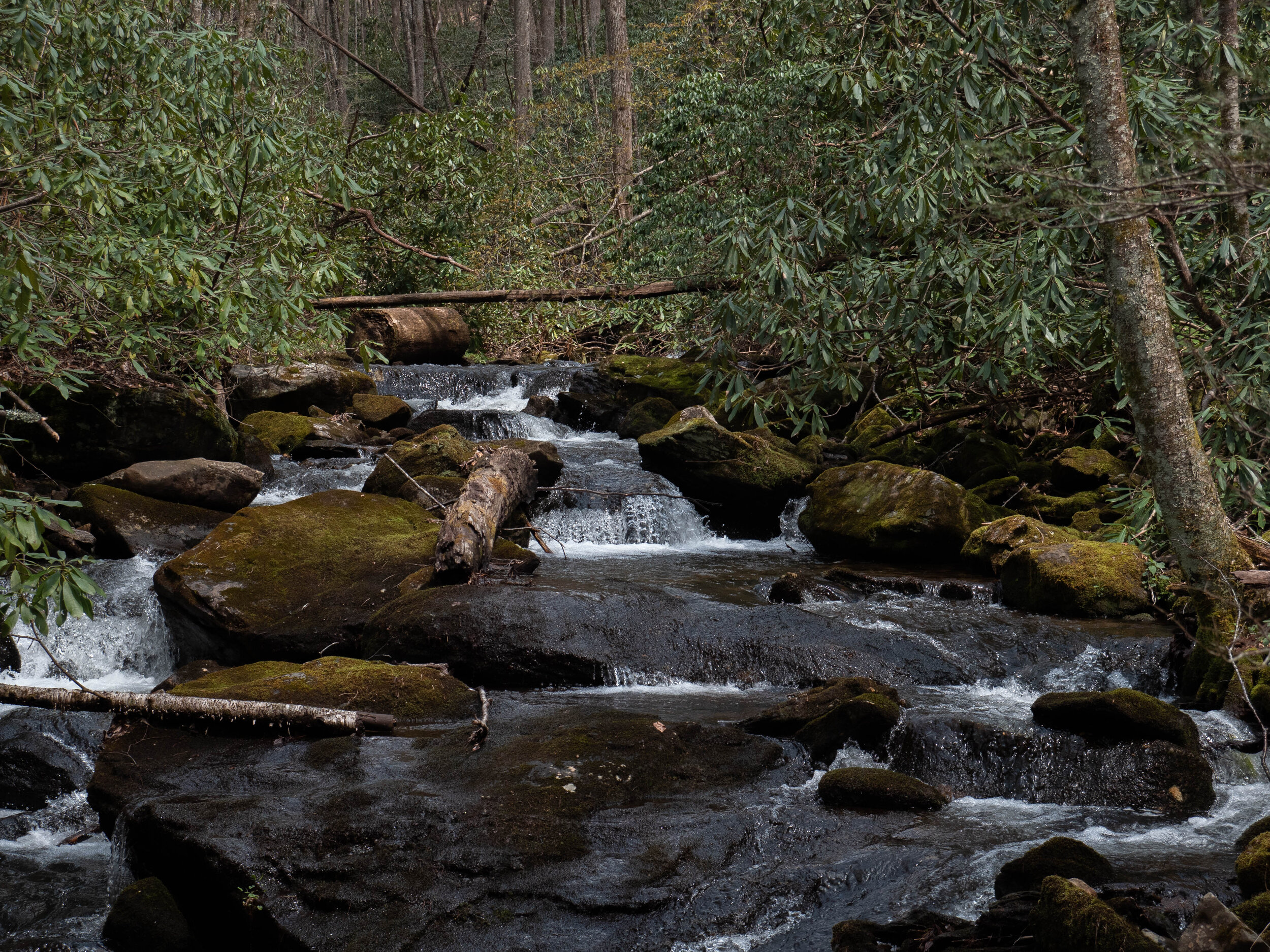How to Choose the Ideal Outfit for Fishing Blue Lines
Many fly fishermen that grow up in the southeast have spent their fair share of time on ‘blue lines’, an affectionate nickname for the small (often overgrown) creeks that spread out like tiny blue capillaries on topographical maps. These streams often have either no name or multiple names, so they appear without any designation on maps.
I happen to be one of those anglers. Growing up in Athens, Georgia, I’d flock to the mountains of north Georgia, western North Carolina, and northwestern South Carolina every free weekend. The small streams that trickle through the southern Appalachian Mountains may not be home to the largest trout, but they are a skinny water angler's paradise. There are miles and miles of rugged wilderness with creeks that go months without being fished.
If an angler if willing to put in the work to find fish, exploring the blue lines can be one of the most rewarding experiences in fly fishing.
IMAGE: Weekender Media
This is not exactly double haul territory. Bow & arrow casts are typically the most effective way to sling your bugs. Although, every now and then, the creeks will open up and you can get in a roll cast. But more often than not, fishing the blue lines means close quarters and tight windows. Be careful: the resident flora will often try to snatch your flies, hat, pack, soul, etc.
That said, you're obviously not taking a 9 foot rod into these places. You just can't.
Well, technically, you can. But it will be the most frustrating day of your entire life. Speaking from experience here... If you're going to be fishing blue lines often, you'll want to invest into a good "creek rod". And when it comes to choosing a creek rod, there are couple of ways you can go.
Before I give my 2 cents on small stream stick selection, check out this excerpt from an article by Ryan McKinney, a North Carolina-based fly fishing guide and founder of the Appalachian Hookset brand:
IMAGE: Weekender Media
“As general guidelines, I would suggest 0-4 for wild trout in smaller creeks and in many cases, a 4 may be excessive. For larger trout, anything in the 3-6 would be seen as acceptable and normal, however many will choose to go with a smaller rod to provide more of a challenge and finesse approach. 5-9 weights would be recommended for bass, steelhead, and throwing bigger streamers in general.”
IMAGE: Weekender Media
THE GENERAL PURPOSE OUTFIT: Ideal for covering little creeks to small rivers
7'-7'6" graphite 3 wt. Preferably Medium-Fast to Fast Action, as strikes happen quickly and response time is critical. Then use a standard weight forward floating fly line, preferably in a drab or camo color. A quick rod should help you toss bushy and foamy dry flies with ease, which means you don’t have to rely on a more aggressive taper. You can never go wrong with the Scientific Anglers Amplitude Infinity fly line, but the RIO Elite Gold is also a good bet. If your rod is closer to Medium Action than Fast, the Scientific Anglers Amplitude Trout is worth a look.
If you want to conquer the blue lines without having to invest in a ‘one-trick pony’ type of outfit, a General Purpose Outfit is perfect for you. Fishing throughout the southeast taught me you can do nearly 80% - 90% of your trout fishing with a 3 wt. fly rod. So if you spend most of your time in the Appalachians, this outfit is about as versatile as it gets.
IMAGE: Weekender Media
TOP PICKS - GENERAL PURPOSE FLY RODS
Sage X - $950
R. L. Winston Pure - $875
Sage Trout LL - $850
Scott Flex - $475
Moonshine Drifter - $199
IMAGE: Weekender Media
THE SPECIALIZED OUTFIT: A dedicated blue line weapon
6'-7' graphite or fiberglass 1-3 wt. Preferably Medium-Fast Action in the graphite, or Fast Action in the fiberglass. Load it up with a specialized skinny water floating fly line, like the RIO Creek or Scientific Anglers Creek Trout. If you prefer throwing mostly small dry flies, go for a line like the Mastery VPT from Scientific Anglers or maybe even a double taper line. For fishing tiny, overgrown creeks with small trout (where the adventure is more important than size of the fish), this is the ideal setup.
REMEMBER: A fly line that casts like a dream on a graphite rod will not feel the same on a fiberglass rod. While the fly line may not leave your reel all that often on this outfit, it’s still good to have the right line for those special opportunities. You never know when you’ll stumble upon an open pool that requires a long, delicate cast.
IMAGE: Weekender Media
TOP PICKS - SPECIALIZED FLY RODS
Sage Dart (Graphite) - $750
Scott F-Series (Fiberglass) - $695
Redington Butter Stick (Fiberglass) - $250






